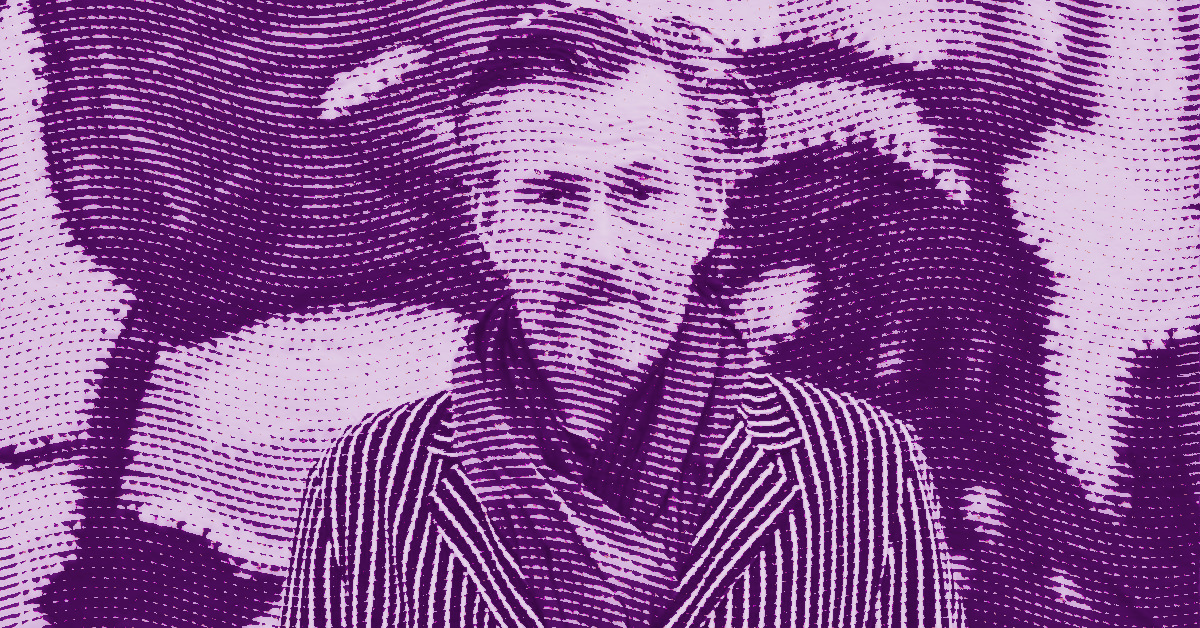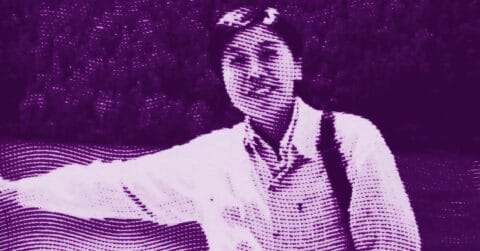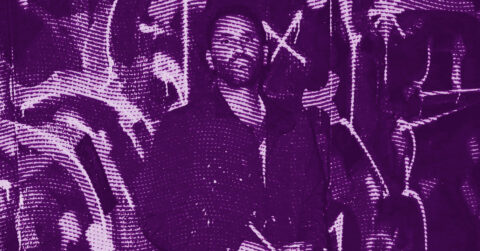Listen to me carefully, you bunch of snobs. When Gunter Damisch declared that his pictorial system was guided by the idea of transformation and metamorphosis, he was not merely uttering an empty phrase destined for exhibition catalogues. This man, who passed away too soon in 2016 at the age of fifty-eight, had understood something essential about the very nature of contemporary art: that painting could be simultaneously a massage for nerve cells and a mapping of the invisible.
Damisch belonged to that generation of Austrian New Wilders who, in the early 1980s, shook up established codes alongside Otto Zitko and Hubert Scheibl. But unlike his contemporaries, he quickly developed a singular path, that of an explorer of the borderline territories between science and sensitivity, between macrocosm and microcosm. His canvases, populated by organic creatures with outstretched tentacles, growing crystalline forms, and galactic energetic concentrations, reveal an artist who had grasped the very essence of our era: this permanent tension between the infinitely small and the infinitely large that characterizes our modern relationship to the world.
The architectural dance of space
Damisch’s work maintains a constant dialogue with architecture, not that of buildings and monuments, but that of the invisible structures organizing our perception. His worlds, fields, networks, and his “Flämmer”, these rather gaseous creatures serving as connectors between the different worlds of his compositions, constitute a true spatial grammar, an architectural vocabulary of the intimate and the cosmic. When he created his gravity-defying figures, lacking extremities and seeming to float within a shifting system, Damisch orchestrated a choreography of space that evokes the most daring research in contemporary architecture.
This architectural approach is particularly evident in his understanding of pictorial space as a territory to inhabit rather than to contemplate. His canvases are not windows open onto elsewhere, but immersive environments where the viewer’s gaze becomes nomadic, constantly exploring new territories. As Andrea Schurian recalled, Damisch was a “world shaper” who opened the two-dimensional space of the canvas to infinity through his serial colorful entanglements, his erasures, and his scrape-offs.
Architect Tadao Ando speaks of the importance of emptiness in spatial creation [1]. For Damisch, this emptiness becomes positive, generating forms and movements. His unlimited pictorial spaces, structured by the interference between the large and the small, create an architecture of experience rather than an architecture of the object. The serpentine lines inscribed in his cosmos reveal a spatial conception where architecture becomes flow, movement, and permanent transformation.
This architectural vision goes far beyond mere compositional organization. It engages a reflection on human habitat in a world in perpetual mutation. The “interior places” of his bronze sculptures, these refuge spaces populated by tiny creatures, propose an alternative to the dominant functionalist architecture. Damisch imagines organic, breathing spaces where humans could find their place in the natural order.
His delicate reticulated towers, larger than life, constitute real architectural propositions. They suggest habitable structures where the boundary between inside and outside blurs, where architecture becomes a permeable membrane between man and his environment. This vision prefigures contemporary research on biomimetic architecture and adaptive structures.
The influence of architecture on his graphic work also deserves to be highlighted. His rhizomatic structures, his lava-like color flows, his serpentine rhythmic lines constitute a true iconic morphology accessible to all. These graphic notations function like architect’s plans of the invisible, topographic surveys of mental spaces where anyone can project their own spatial experiences.
Creative melancholy and the alchemy of forms
Damisch’s work also dialogues with a deep literary tradition, that which explores the secret correspondences between states of mind and forms of the world. His “entanglements” and “convolutions” irresistibly evoke the universe of W.G. Sebald, the writer who knew how to transform melancholy into creative force. As with the author of “Saturn’s Rings,” contemplation of natural forms becomes for Damisch the starting point for meditation on time, memory, and transformation.
This melancholic dimension does not stem from pessimism, but from a particular lucidity in the face of the cycles of destruction and regeneration that govern the living. When Damisch observed “worms and snakes, loops and vines, streams and winding rivers, coastlines and shores, rivulets and wormholes, traces of insect gnawing on bark and water erosion,” he practiced this form of active melancholy that Sebald termed the “natural science of destruction.”
His poetic titles testify to this particular literary sensitivity. “Weltwegköpflerdurcheinander,” “Köpflerflämmler am Wetlbogen,” “Köpflersteher Weltaffäre” are expressions that seem to be composed German words, but are entirely invented by the artist and deliberately absurd. These neologisms reveal an artist who thought like a poet, for whom the naming of forms participated in their very creation. This linguistic approach to painting recalls Paul Celan’s research on the correspondences between image and language.
Damisch’s melancholy transforms naturalistic observation into cosmic vision. His single-celled creatures with outstretched tentacles, his crystalline formations, his galactic energy concentrations testify to an ability to perceive in the microscopic the laws governing the entire universe. This melancholic and scientific vision at once evokes Goethe’s “Elective Affinities,” where observation of natural phenomena reveals the secret laws that govern human passions.
The transition from pictoriality to textuality in his work from the 1990s perfectly illustrates this literary dimension. Damisch developed a pictorial cosmos endowed with its own conceptual vocabulary, where “Welten”, “Steher”, “Flämmler” and “Wege” became the characters of a personal mythology. This linguistic creation parallel to the plastic creation attests to a total approach to art, where painting and literature nourish each other.
His collages, integrating newspaper clippings and wood engravings on the pictorial surface before covering them with paint, recall the technique of composition by successive layers dear to writers. As in Sebald’s work, the past surfaces beneath the present, creating these effects of temporal transparency that give the work its melancholic depth.
This creative melancholy finds its most accomplished expression in his bronze sculptures, which Otto Breicha called “thorny models for the whole world” [2]. These fossilized creatures seem to carry within them the geological memory of the earth, bearing witness to this distinctly literary capacity to perceive traces of deep time in the present.
Teaching as an artistic act
Professor for more than twenty years at the Academy of Fine Arts in Vienna, Damisch revolutionized the pedagogical approach to art. His teaching did not aim to train “little Damisches” but to reveal in each student that “little art plant” he perceived in everyone. This pedagogical approach is in itself a work of art, a social sculpture in the sense Joseph Beuys understood it.
Damisch considered teaching as a process of mutual transformation. It was not about transmitting established knowledge, but about creating the conditions for a joint discovery. His students unanimously testify to this unique ability to create a learning environment where “art can do everything and must do nothing”. This phrase, which he liked to repeat, perfectly sums up his pedagogical philosophy: offering a framework of total freedom while maintaining the highest standards.
This approach originated in his own training with Arnulf Rainer and Max Melcher, but also in his experience as a musician within the punk band “Molto Brutto”. Damisch had understood that artistic learning was less about acquiring techniques than about the ability to develop a personal language. His method consisted in accompanying each student in this quest for authenticity, without ever imposing his own aesthetic.
The testimonies of his former students reveal a teacher who knew how to adapt his approach to each personality. Some needed encouragement, others more firm challenges. Damisch mastered this delicate art of differentiated pedagogy, knowing when to “console” and when to give “a kick in the butt”, according to the expression of one of his students.
His institutional commitment also testifies to this broad conception of art. Commission president, senate member, institute head: Damisch considered these administrative functions not as constraints, but as natural extensions of his artistic work. It was about creating the institutional conditions allowing art to flourish.
A living legacy
Almost ten years after his passing, Gunter Damisch’s work continues to shine far beyond specialized circles. His research into the correspondences between macro and microcosm finds a particular echo in our contemporary concerns related to ecology and life sciences. His “thorny models for the whole world” offer keys to understanding how to think about our relationship with nature in the Anthropocene.
The influence of his teaching is measured by the diversity of the paths taken by his former students, who are now active in the most varied artistic fields. This creative dispersion attests to the accuracy of his pedagogical method: training artists capable of developing their own language rather than epigones.
His artistic research on transformation and metamorphosis also anticipates current questions about artificial intelligence and biotechnologies. By exploring the borderline territories between organic and inorganic, natural and artificial, Damisch has opened paths that contemporary art is only beginning to explore.
The universality of his artistic language explains his growing international reception. His exhibitions in China, Iceland, and the Czech Republic testify to this ability to speak a visual language that transcends cultural borders. His “gas creatures” and “connectors between worlds” offer visual metaphors to think about globalization and intercultural exchanges.
Damisch has left us a body of work that functions like a “net cast into the ocean of consciousness.” At a time when contemporary art sometimes seems lost in pure conceptualization or spectacle, his example reminds us that painting can still offer irreplaceable sensory experiences. His canvases continue to invite this “dancing perception of oneself as perceiving” that he wished for.
True art survives its creator by continuing to produce meaning. The work of Gunter Damisch perfectly meets this criterion. It offers us visual and conceptual tools to apprehend the complexity of the contemporary world, this permanent tension between local and global, between individual and collective, between human and non-human that characterizes our era.
- Tadao Ando, “The Architecture of the Void”, Éditions du Moniteur, 2000.
- Otto Breicha, quoted in “Gunter Damisch. Weltwegschlingen”, Hohenems/Vienna, 2009.
















